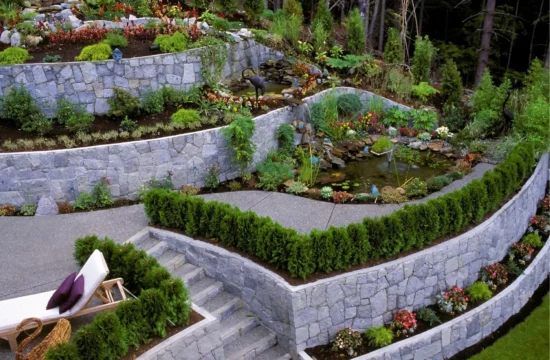Home extensions are becoming increasingly popular as homeowners look for ways to add more space to their existing properties without the need to move. Whether you need extra room for a growing family, want to create a home office, or just desire more functional living space, a home extension can provide a cost-effective solution. In this guide, we will explore the various types of home extensions, the benefits of extending your home, the planning process, costs involved, and tips for choosing the right builder. We will also look at some design ideas and common challenges that may arise during the construction process.
Introduction to Home Extensions
A home extension is a modification made to an existing property that increases its size and functionality. Extensions can be done in various forms, such as adding extra rooms, converting spaces like lofts or basements, or expanding the property outward or upward. With increasing property prices, many homeowners are opting to extend their current homes instead of purchasing new ones, as it provides more space without the costs and hassle of moving.
Extensions can be tailored to meet specific needs, whether that’s creating more bedrooms, expanding a kitchen, or adding a new living area. The beauty of home extensions is the ability to transform the existing layout of your house to better suit your lifestyle. They can be simple or complex, depending on your needs and budget.
Types of Home Extensions
There are several types of home extensions that homeowners can choose from, depending on their needs, budget, and available space.
Single-storey Extensions
Single-storey extensions are one of the most common and straightforward types of home extensions. These involve adding a new room or space on the ground level of the property. It could be a new kitchen, living room, or an additional bedroom. Single-storey extensions are typically more affordable and quicker to complete compared to larger, more complex extensions.
Double-storey Extensions
Double-storey extensions are larger and involve expanding the property both upwards and outwards. These extensions can create more significant changes to the home and are ideal for families who need additional living spaces such as multiple bedrooms, a larger kitchen, or a home office. However, they come with a higher price tag and may take longer to complete.
Loft Conversions
Loft conversions are another popular form of home extension that involves converting the unused attic space into a liveable area. This can add extra bedrooms, a bathroom, or even a study. Loft conversions are ideal for homes with limited space on the ground level but may require structural changes to support the new rooms.
Basement Extensions
Basement extensions involve digging down to create additional space below ground level. This is often used in urban areas where there is limited room for outward extensions. Basement extensions can be transformed into living rooms, home theaters, or even fitness areas, but they often require significant structural work.
Rear or Side Extensions
These types of extensions expand the home’s footprint by extending the property at the rear or side. This can help create more space without disrupting the existing structure of the home. Rear or side extensions are a great option for increasing the kitchen size or creating a larger living room.
Benefits of Home Extensions
Home extensions offer a variety of benefits for homeowners looking to improve their living space. They not only enhance the functionality of a property but also increase its value, making it a smart investment for the future.
More Living Space
One of the most obvious benefits of a home extension is the additional living space. As families grow or as lifestyles change, having extra space becomes crucial. Whether it’s for a new bedroom, an office, or just more room to relax, a home extension allows you to tailor your space to meet your evolving needs.
Increased Property Value
Home extensions can significantly increase the value of your property. A well-planned extension can make your home more attractive to potential buyers, especially if it adds features that are in demand, like a larger kitchen or additional bathrooms. Even if you’re not planning to sell, the increased value of your home gives you peace of mind that your investment is worthwhile.
Improved Functionality
Extensions can make your home more functional by adapting the layout to better fit your lifestyle. For instance, you could create an open-plan kitchen and dining area, a space for remote work, or a home gym. A custom extension ensures that your home meets your specific needs.
Personalization and Design Options
Another great benefit of home extensions is the ability to personalize your living space. You can choose the design, layout, and materials that suit your style. This flexibility allows you to create a home that reflects your tastes and enhances your quality of life.
Planning a Home Extension
Planning is one of the most important steps when it comes to building a home extension. The more carefully you plan, the more likely you are to avoid unexpected challenges and stay within your budget.
Steps Involved in Planning a Home Extension
The first step in planning a Home extension is determining exactly what you want to achieve. Do you need an additional bedroom, a bigger kitchen, or a home office? Next, research the best design and layout options for your home, and consult professionals like architects and builders for their expert input.
Understanding Your Needs and Goals
Before starting the project, take time to clearly define your needs and goals. This helps you prioritize the essential features you want in your extension, whether that’s creating extra storage or maximizing natural light. Make sure your goals align with your budget and timeline to ensure you don’t run into any problems later.
Setting a Realistic Budget
A home extension can be costly, so it’s important to set a realistic budget that takes into account materials, labor, permits, and potential unforeseen expenses. Research costs for the type of extension you want and allow for a contingency fund in case of unexpected delays or complications.
Choosing the Right Design and Layout
Once you have a clear vision of your needs and budget, it’s time to choose the design and layout for your extension. The design should complement the existing structure of your home and maximize space. Work with professionals to create blueprints that reflect your ideas and meet building codes.
Legal Considerations and Permits
Before beginning any home extension project, it’s essential to be aware of the legal requirements and permits needed to ensure the work is compliant with local laws and building codes.
Do You Need Planning Permission?
In many cases, a home extension will require planning permission from your local council, especially if it involves significant changes to the structure of the property. However, smaller extensions or those that fall within permitted development rights may not require permission. Always check with your local council to ensure you follow the necessary procedures.
Building Regulations to Follow
In addition to planning permission, your extension must meet certain building regulations. These regulations ensure the extension is structurally safe, energy efficient, and accessible. Regulations cover aspects such as electrical wiring, insulation, and fire safety. Hiring professionals like architects and engineers can help ensure your project meets all required standards.
Working with Architects and Contractors
Hiring qualified architects and contractors is crucial to ensure the project runs smoothly and meets legal requirements. Architects will help design the extension, while contractors will carry out the construction work. Ensure that your builder is licensed and insured, and verify their reputation through past projects.
Costs of Home Extensions
The cost of a home extension varies widely depending on factors such as the type of extension, the size, the materials used, and your location. Understanding these factors can help you plan your budget more effectively.
Factors Influencing the Cost of Home Extensions
Several factors can affect the cost of a home extension. The complexity of the design, the type of extension, and the materials used all contribute to the overall price. Location also plays a role, as labor costs and material availability vary by region.
Average Cost Estimates for Different Types of Extensions
On average, single-storey extensions can cost between £1,000 to £2,500 per square meter, while double-storey extensions may cost between £1,500 to £3,000 per square meter. Loft conversions typically range from £20,000 to £50,000, depending on the scale. Basement conversions can be much more expensive due to the structural work involved.
Ways to Save Money During the Process
There are ways to keep costs down during your home extension project. Consider using cost-effective materials, opting for a more straightforward design, and managing the project yourself to reduce labor costs. Also, get multiple quotes from contractors to ensure you’re getting the best deal.
Choosing the Right Builder for Your Home Extension
Selecting the right builder is crucial to the success of your home extension project. A skilled and experienced builder will ensure the project runs smoothly, stays on budget, and meets all necessary regulations.
How to Find a Qualified Builder
To find a qualified builder, ask for recommendations from friends, family, or neighbors who have done similar work. You can also search online for reputable construction companies or consult professional trade associations. Always check credentials and licenses before hiring.
Questions to Ask Potential Builders
When interviewing potential builders, ask about their experience, portfolio, and past projects. Find out how they handle challenges, delays, and unexpected issues. It’s also important to discuss your budget and timeline in detail to ensure the builder can meet your expectations.
Checking References and Past Projects
Before making a final decision, ask for references from previous clients and check the builder’s past projects. Visiting completed extensions or speaking to past clients can provide insight into the builder’s work quality and reliability.
The Construction Process of a Home Extension
The construction process for a home extension involves several stages, each requiring careful attention to detail and coordination between contractors, architects, and homeowners.
Stages of Building a Home Extension
The first stage is preparing the site, which includes clearing the area, excavating, and laying the foundation. Next, the structure of the extension is built, followed by roofing, insulation, and windows. Once the basic structure is complete, internal work like plumbing, electrical systems, and finishing touches are carried out.
Timeframe for Completing an Extension
The time it takes to complete a home extension can vary based on the size and complexity of the project. A typical single-storey extension may take around three to four months, while more complex double-storey extensions or loft conversions can take six months or longer.
How to Ensure Minimal Disruption During Construction
To minimize disruption during construction, work with your builder to establish a clear timeline and communicate regularly about any changes or delays. Make sure the project doesn’t interfere with your daily routine, and try to plan around key milestones.
Design Ideas for Your Home Extension
Designing your home extension allows you to customize the space according to your preferences, ensuring it integrates seamlessly with your existing property while serving your needs.
Modern vs Traditional Designs
You can choose between modern designs with open spaces, minimalist aesthetics, and large windows, or traditional styles that incorporate classic elements like brickwork and pitched roofs. Whichever style you prefer, ensure that it complements the rest of your home and enhances its curb appeal.
Sustainable and Eco-friendly Options
Eco-friendly design features such as solar panels, energy-efficient insulation, and sustainable materials can help reduce your carbon footprint and lower long-term utility costs. Consider green building techniques that are both cost-effective and environmentally responsible.
Incorporating Natural Light and Open Spaces
Maximizing natural light and creating open, airy spaces can make your extension feel larger and more inviting. Large windows, glass doors, and open-plan layouts are great ways to bring in natural light and create a seamless connection with your outdoor space.
Common Challenges in Home Extensions
While home extensions can be exciting, there are common challenges that homeowners may face during the planning and construction process.
Dealing with Unexpected Delays
Delays can occur due to weather, material shortages, or other unforeseen issues. Make sure to factor in extra time when planning your extension and communicate with your builder regularly to stay on track.
Managing Costs During Construction
Construction projects often face unexpected costs, especially if complications arise. Always allow for a contingency fund in your budget to cover any extra expenses.
Navigating Difficult Weather Conditions
Weather can sometimes disrupt the construction process, especially if you’re building during colder months. Work with your builder to plan for weather-related delays and ensure that the project stays on schedule.
Conclusion
Building a home extension can significantly improve your living space and add value to your property. By understanding the different types of extensions, planning carefully, and working with experienced professionals, you can ensure a smooth construction process. While challenges may arise, the benefits of having a customized and expanded home are well worth the effort. Whether you’re looking to create more room for your family or enhance your home’s functionality, a well-planned extension can transform your living environment for years to come.











